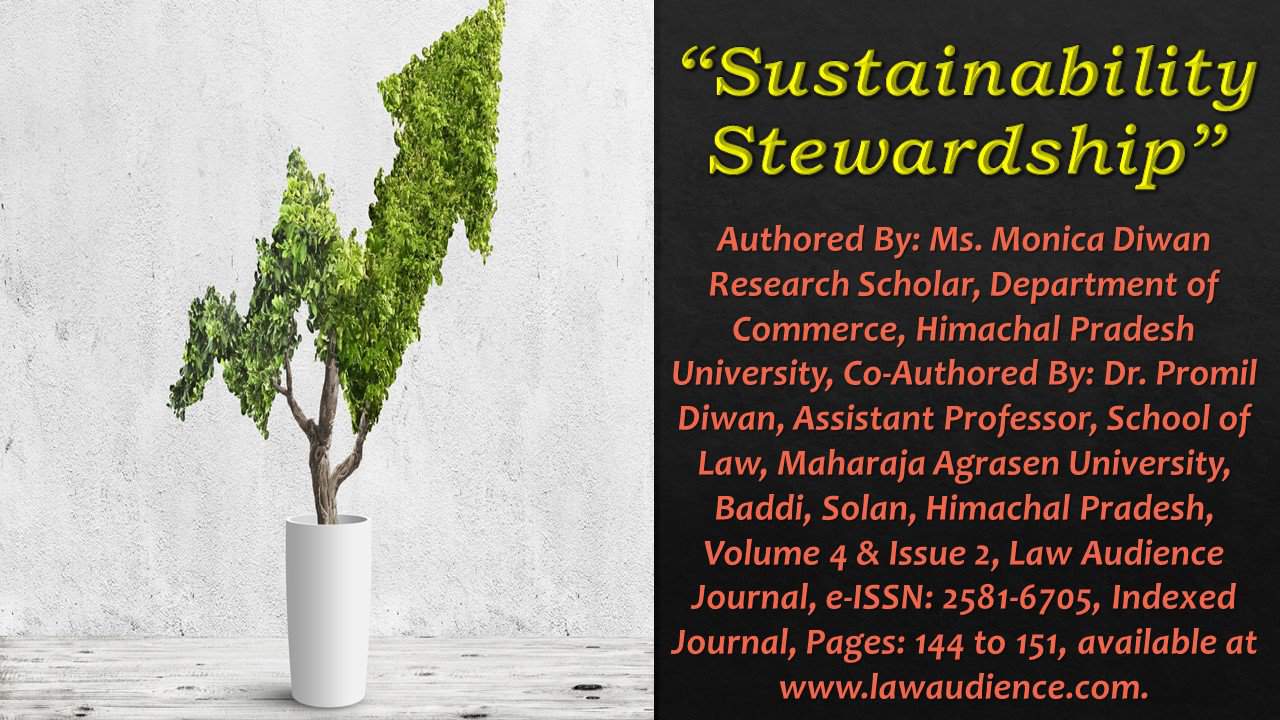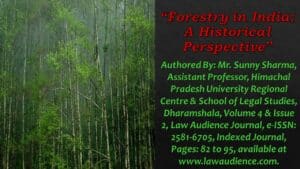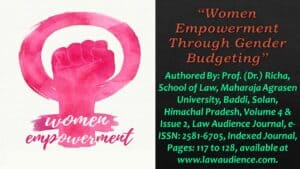Click here to download the full paper (PDF)
Authored By: Ms. Monica Diwan, Research Scholar, Department of Commerce, Himachal Pradesh University,
Co-Authored By: Dr. Promil Diwan, Assistant Professor, School of Law, Maharaja Agrasen University, Baddi, Solan, Himachal Pradesh,
Click here for Copyright Policy.
ABSTRACT:
“Sustainability Stewardship is the idea of responsible usage of environment and its resources in order to provide a better future to the coming generations. It is an effort to bring together all the elements such as environment, economy and people together to achieve the green goals where the success of one element enables the success of another. The green choices of the consumers depend on the factors such as conservation, health, animal lovers etc. The paper endeavours to segregate and describe their green choices and their levels”.
Keywords: Sustainability, Sustainability Stewardship, Green Marketing, Green Products, Environment.
II. INTRODUCTION:
Green marketing encompasses all those activities that correspond to the needs and desires of consumers with minimum adverse effects on the environment. Such activities may include an eco-friendly product, process, package or modified advertising. Going green helps businesses to a new growth level in which they can diversify according to the needs of the business and the need of the consumers. Increasing use of the different types of the green energy such as solar, wind, hydraulic and geothermal energy must be used in order to reduce cost which will ultimately lead to reduction in emissions and pollution. There are many products that are green and these products are either manufactured in view of safety to the environment i.e., not harmful to the ecology or the process/technology used to manufacture such products is environmentally safe can be termed as green products. These products can be recycled, may use recycled raw materials or may have a green production process that may lead to an eco-friendly finished product.
II. EVOLUTION OF GREEN MARKETING:
Green products are typically durable, nontoxic, made from recycled materials, or minimally packaged. Of course, there are no completely green products, for they all use up energy and resources and create by-products and emissions during their manufacture, transport to warehouses and stores, usage, and eventual disposal. So green is relative, describing those products with less impact on the environment than their alternatives (Ottman, 1998, p. 89). The evolution of green marketing has been divided in three major phases known as: Ecological Green Marketing, Environmental Green Marketing, Sustainable Green Marketing. The first phase had a narrow scope mainly focusing on specific problems like reduction in air, water land pollution etc, and resource depletion at local and national level for which it was seeking the companies that are responsible for such issues and helping them to mitigate the same. This phase had a positive outcome in the form of environmental laws and regulations.
Some businesses started adhering to these standards very strongly such as Bodyshop, Ben and Jerry and 3M were the firsts among all. The second phase started gearing in late 1980s which was the direct result of the environmental events that occurred and opened eyes of the world towards better regulations and policies such as Bhopal Gas Tragedy 1984, Antarctic hole in the ozone layer in 1985, Chernobyl in 1986 the Exxon-Valdez oil spill in 1989. Such disastrous events led to the establishment of a groundbreaking manual by UN in the form of “Brundtland report” in 1987, coining the term Sustainability that posits the use of today’s resources in a way that isn’t at the cost of the future generations (Peattie, 2001). There are three measures of sustainability: environmental, social and economic (Martin & Schouten, 12).
Environmental sustainability proposes the conservation of the environment with the latest strategies in accordance to the new issues and challenges that will help in mitigating the negative effects of growing demands on scarce resources and the pollution generated by the living standard of the affluent. The poverty problem is graver as the poor will not pay heed to the environment as all they would require is to satisfy their needs and wants no matter what the consequences. They will destroy their immediate environment to survive hence the need to protect the environment is not their priority. Thus, economic sustainability is now more cardinal to achieve in order to bridge the gap between the haves and have nots. It is the continuous ability of the economic system to provide for the people and their needs if economy suffers the people will suffer too. Social sustainability involves the ability of the communities to provide for the well being of their members. thriving communities will provide better healthcare, food, resources, education, employment which together regulates the issues such as economic and environmental.
Thus, this is a circular process where the success of one element enables the success of another. The third phase has made bigger strides in terms of sustainability where the components like futurity, equity and emphasis on needs are dealt with. It posits that if the current generation keeps on using unsustainable methods it will be detrimental to the coming generations therefore, renewable resources is the answer that will help in protecting and maintaining the environment. The equity lies in bringing the difference in the economic status of the industrial economies and non industrial economies where former enjoy seven times more average real incomes as compared to latter. Sustainability aims for a more equitable distribution of these costs and benefits among nations, sexes and ages (Peattie 2001).
III. GREEN CHOICES:
It is the need of the hour to provide sustainable choices to the consumers in order to achieve the green goals. Initially, all the green products that were available to the consumer were mainly from niche businesses that used to cost more and were not as appealing as the other non green products. With the advent of new technology and the increasing demand of products and services that are eco-friendly the companies had to take action in order to cater to such preferences. The governments have also developed regulations that are in accordance to the new and old issues pertaining to ecology and its protection. The green market is not just here to stay, it will also grow and mature, evolving the rules of engagement even further. Knowing how best to cater to today’s green consumer will bring significant opportunities (Ottman, 2011, p. 2). Consumers that understand green marketing have the opportunity to reduce their personal influences on the environment. A growing number of consumers are particularly interested in ways to eliminate their negative influence on the environment, and green marketing efforts are focused on this activity (Dahlstorm, 2010, p. 21). Green consumption is defined by (Peattie, 1992, p. 118) as the purchasing and non-purchasing decisions made by consumers, based at least partly on environmental or social criteria. Thus, Green marketing involves providing consumers with more sustainable and socially acceptable products and consuming them in a more sustainable and more socially responsible way.
(Ottman, 2011), provides segmentation of green consumers in four types resource consumers, health fanatics, animal lovers and outdoor enthusiasts. Resource consumers are those that despise waste and wastages. They are the ones who have switched to using eco-friendly products and packing, carry bags, CFL, recycling, composting etc. Health Fanatics are powered by the impact of environmental destruction on their own well being such as effect of ozone depletion in their skin, long term consequences of pesticides on the health. They pay premium on organic foods, supplies etc. Animal lovers as the name suggests are passionate about the well being of animals thus condemn any harm to animals in any shape or form whatsoever. They are mainly vegetarians and vegans and only buy products that are “cruelty free”. Outdoor enthusiasts are serious about minimizing the environmental impact of their recreational activities.
Their new purchasing criteria includes outdoor gear made from recycled materials. The motives and strategies visibly used by green consumers are to take control over their consumption pattern with the help of material information helping in alleviating the guilt of destroying the planet and maintaining that lifestyle for lifetime. For such needs to work they need to take steps where they take preventive measures to reduce their negative impact, carefully reading the labels of the products and always use greener alternatives consciously. Green consumers can be easily identified after these segmentations in which the consumers are segregated into five shades of green, a classification provided by NMI’s 2009 green consumer segmentation model. This model proposes that there are five types of green consumers i.e., LOHAS, Naturalities, Drifters, Conventionals and Unconcerneds. LOHAS means Lifestyles of Health and Sustainability, this segment consumers are socially responsible, driven to protect the environment, and are avid users of green products. They take action to ensure personal and planetary health and influence others to do so. LOHAS is a critical target consumer for the Companies marketing green products as these consumers shall buy-in is fundamental to establishing meaningful brand loyalty among most consumer segments. Naturalities make most of the purchase decisions based on benefits to their personal health.
The interest to protect the environment comes from their personal health rather than planetary health thus they are avid users of natural and organic consumer packaged products. Drifters are usually younger generations motivated by latest trends, their commitment to any issue including sustainability keeps shifting. Drifters are more likely to view price as a barrier to green living. Conventionals are driven by practicality and frugality rather than environment concerns. They are not particularly environmentally conscious. However, they do sometimes engage in LOHAS behaviour such as recycling and energy conservation. The people that exhibit zero interest in saving the planet via nay means or method are categorised as Unconcerneds.
Green marketing is an effective avenue for businesses to address the ethical issue of environmental justice. However, it appears that there is need for a greater awareness of the link between green marketing and environmental justice among writers and practitioners alike (Oyewole, 2001). Green marketing requires a thorough approach wherein the government, businesses and consumers come together to achieve the ecological balance. There are many pitfalls that may hinder the targeted success which are further explained by (Peattie & Crane, 2005), such as green spinning, green selling, green harvesting, enviropreneur marketing and compliance marketing. Green spinning suggests companies that only publicize their green efforts with the help of PR which in fact has very little to zero impact on their original no green actions. This may be called as green washing by the companies such as oil, chemicals, pharmaceuticals etc. Green selling is an opportunistic response to the green demand where the green attributes of the products are identified post-hoc in the existing product. They only use this to fool consumer into thinking they are buying a green product which in reality was not meant to be a green product by slapping unproven green claims in order to increase sales. But many companies actually use their R&D to put to greener use when they realize that this will eventually result in energy efficiency and cost efficiency which results in green harvesting, these experience short term profits and due to lack of relevant market data they also are discouraged to fully transform to a green organisation.
Another failed attempt is an Enviropreneur marketing where a new idea is made into a product such as wooden goods, paper goods, cleaning goods etc. The problem lies with their niche market size that is easily absorbed by big market leaders and these products only gather dust at shelves. Compliance marketing is the conservative green marketing in a way where the main aim of the businesses is to comply the rules and regulations made by the local, national and international government and agencies in order to sell their products such as ban on use of CFC, recycling units, waste disposal and treatment units, pollution control, water pollution control and use of renewable resources to produce and distribute products.
Changing consumers’ behaviour to emphasize consuming less and consuming goods that are produced in much more sustainable ways represents a challenge of great magnitude. This is especially true because of the economic forces, manifest in the private sector of the economy, pushing for more consumption. Yet many private-sector businesses claim to understand the imperative to move towards sustainability (Portney, 2015, p. 107). There are certain actions that can be taken by the businesses to achieve the green goals such as using sustainable resources for raw material, using recycled resources and content, making products energy efficient, making more durable products, making the packaging of the product reusable and refillable, at the designing stage making sure that the products are designed with remanufacturing, recycling and repair capabilities, making products safe for disposal, being proactive, keep addressing green issues continuously, addressing environmental issues at the design stage, diversify offering to greener profile, rethinking the value added by the products, reducing toxicity in the products and packaging, water efficient, innovate for sustainability therefore reducing environmental impact directly and indirectly (Ottman, 1998).
IV. CONCLUSION:
Sustainability is connected to the environment, economy and people, with these three going hand in hand can assure the relevant changes required in the world are actually met. Businesses need to merge their long-term goal of economic gains with environmental goals to achieve overall benefits of the strategies and policies laid down by the government at national and international levels. It is easy to get lost in the noise of cynicism where environmental efforts are seen as a drop of clean water in the polluted ocean but if everyone collectively put efforts to preserve our earth the results will be tenfold.
Cite this article as:
Ms. Monica Diwan & Dr. Promil Diwan, “Sustainability Stewardship”, Vol.4 & Issue 2, Law Audience Journal (e-ISSN: 2581-6705), Pages 144 to 151 (12th August 2022), available at https://www.lawaudience.com/sustainability-stewardship/.
References & Footnotes:
- Dahlstorm, R. (2010). Green Marketing Theory, Practice, and Strategies. Cengage Learning.
- Martin D., J. Schouten. (2015). Sustainable Marketing. Dorling Kindersley(India) Pvt. Ltd.
- Ottman, J.A. (1998). Green Marketing Opportunity For Innovation. J. Ottman Consulting Inc.
- Ottman, J.A. (2011). The New Rules Of Green Marketing Strategies, Tools, and Inspiration for Sustainable Branding. Greenleaf Publishing.
- Oyewole P. (2001). Social Costs of Environmental Justice Associated with the Practice of Green Marketing. Journal of Business Ethics, 29, 239-251.
- Peattie, K. (1992). Green Marketing. Pitman Publishing.
- Peattie, K. (2001). Towards Sustainability: The Third Age of Green Marketing. The Marketing Review, 2, 129-146.
- Peattie, K., A. Crane. (2005). Green Marketing: legend, myth, farce or prophesy?. Qualitative Market Research: An International Journal, 8(4), 357-370.
- Portney, Kent E. (2015). Sustainability. The MIT Press.
- Understanding The LOHAS MarketTM Report. (2007). Retrieved from http://www.lohas.se/wp-content/uploads/2015/07/Understanding-the-LOHAS-Consumer-11_LOHAS_Whole_Foods_Version.pdf.
- United Nations General Assembly, Chapter 1: A Threatened future, Report of the world Commission on environment and development : Our common future, document A/42/427, 1987, Retrieved from http://www.un-documents.net/ocf-01.htm.




